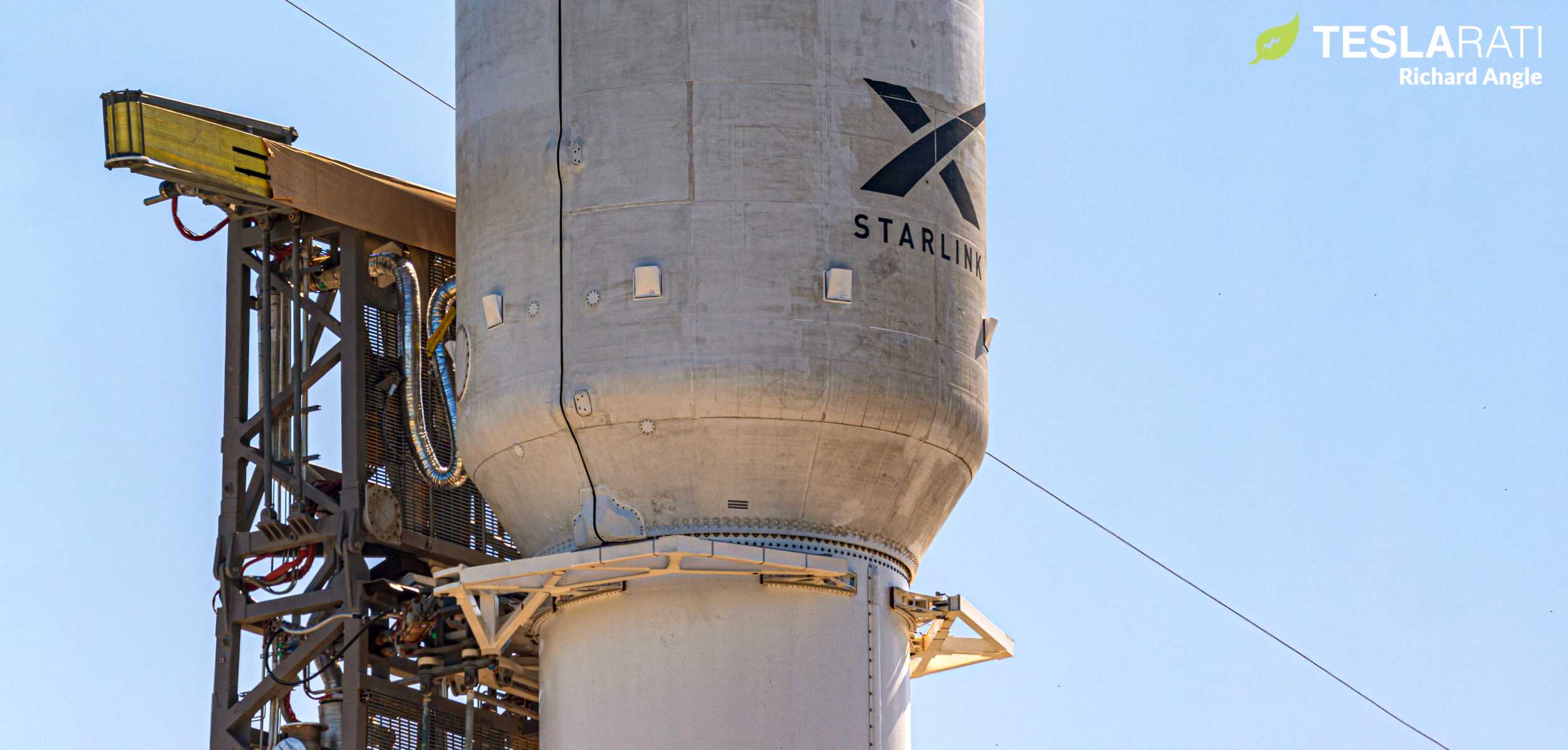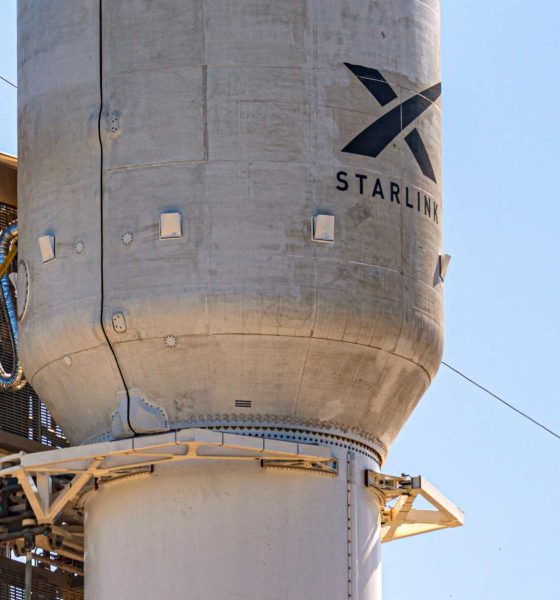

News
SpaceX’s next-gen Starlink plans questioned by a company with zero satellites
In the latest instance of an Amazon-related venture attempting to use regulations and legal routes to suppress competition, Amazon’s Project Kuiper satellite internet venture wants the FCC to dismiss SpaceX’s application for the next generation of Starlink satellites.
In a document filed with the FCC in late August, Project Kuiper took the significant step of asking the regulatory body to entirely dismiss a SpaceX request to modify plans for the next generation of Starlink satellites. As previously discussed on Teslarati, SpaceX submitted that modification request on August 18th with one clear focus: optimizing Starlink satellites and the constellation’s orbital ‘shells’ to best take advantage of the imminent capabilities of the next-generation Starship launch vehicle.
Nominally capable of launching at least 100 metric tons (~220,000 lb) to low Earth orbit (LEO) in a fully reusable configuration, Starship would boost the mass of Starlink satellites SpaceX could orbit with one launch by a factor of 5-6 or more relative to Falcon 9. In other words, with Starship, SpaceX could feasibly fill out its Starlink constellation at least 5-6 times faster than with Falcon 9. However, as is public knowledge, Starship is still firmly in the development stage and has yet to attempt its first orbital launch, adding a great deal of uncertainty to when it might be ready for operational launches.
In turn, while not unprecedented, SpaceX chose to modify its license application for the second (or third) phase of Starlink satellites – a constellation made up of almost 30,000 spacecraft – to include two distinct options: a constellation where Starship is ready on time and one where it is not. Amazon’s Project Kuiper project, Effectively a Starlink clone helmed by former senior managers and engineers that SpaceX CEO Elon Musk personally ousted in 2018 for being slow and overcautious, Amazon’s Project Kuiper was apparently not happy with the changes its competitor made.
Per Amazon’s “ex parte”, the company made it clear that it believed SpaceX’s decision to pose two hypothetical constellation layouts in one application was a radical subversion of FCC requirements and insult to decorum itself, calling it “at odds [with FCC rules]” and implying that SpaceX’s Gen2 mod request is wholly incomplete and an attempt to open up the FCC to blatant speculation.
Published six days later, SpaceX pulls no punches in its response to Amazon, raking the company through the coals for an incessant number (dozens) of filed objections to Starlink while simultaneously failing to address crucial FCC questions about the nature of the Project Kuiper constellation. Bizarrely, SpaceX’s response also accurately points out how Amazon’s legal team seemingly fails to understand SpaceX’s modification request, which poses two mutually exclusive constellation layouts with mostly marginal differences. Amazon’s central argument appears to be that SpaceX actually hasn’t submitted enough information by meticulously detailing two constellation layouts instead of one, claiming that it left “every major detail unsettled.”
Ultimately, it’s now up to the FCC to decide if it will follow Amazon’s demand and reject SpaceX’s application or if it will deny the objection and open it up to public responses and the commission’s own review.

News
Tesla China delivery centers look packed as 2025 comes to a close
Needless to say, it appears that Tesla China seems intent on ending 2025 on a strong note.

Tesla’s delivery centers in China seem to be absolutely packed as the final days of 2025 wind down, with photos on social media showing delivery locations being filled wall-to-wall with vehicles waiting for their new owners.
Needless to say, it appears that Tesla China seems intent on ending 2025 on a strong note.
Full delivery center hints at year-end demand surge
A recent image from a Chinese delivery center posted by industry watcher @Tslachan on X revealed rows upon rows of freshly prepared Model Y and Model 3 units, some of which were adorned with red bows and teddy bears. Some customers also seem to be looking over their vehicles with Tesla delivery staff.
The images hint at a strong year-end push to clear inventory and deliver as many vehicles as possible. Interestingly enough, several Model Y L vehicles could be seen in the photos, hinting at the demand for the extended wheelbase-six seat variant of the best-selling all-electric crossover.
Strong demand in China
Consumer demand for the Model Y and Model 3 in China seems to be quite notable. This could be inferred from the estimated delivery dates for the Model 3 and Model Y, which have been extended to February 2026 for several variants. Apart from this, the Model Y and Model 3 also continue to rank well in China’s premium EV segment.
From January to November alone, the Model Y took China’s number one spot in the RMB 200,000-RMB 300,000 segment for electric vehicles, selling 359,463 units. The Model 3 sedan took third place, selling 172,392. This is quite impressive considering that both the Model Y and Model 3 are still priced at a premium compared to some of their rivals, such as the Xiaomi SU7 and YU7.
With delivery centers in December being quite busy, it does seem like Tesla China will end the year on a strong note once more.
News
Tesla Giga Berlin draws “red line” over IG Metall union’s 35-hour week demands
Factory manager André Thierig has drawn a “red line” against reducing Giga Berlin’s workweek to 35 hours, while highlighting that Tesla has actually increased its workers’ salaries more substantially than other carmakers in the country.

Tesla Giga Berlin has found itself in a new labor dispute in Germany, where union IG Metall is pushing for adoption of a collective agreement to boost wages and implement changes, such as a 35-hour workweek.
In a comment, Giga Berlin manager André Thierig drew a “red line” against reducing Giga Berlin’s workweek to 35 hours, while highlighting that Tesla has actually increased its workers’ salaries more substantially than other carmakers in the country.
Tesla factory manager’s “red line”
Tesla Germany is expected to hold a works council election in 2026, which André Thierig considers very important. As per the Giga Berlin plant manager, Giga Berlin’s plant expansion plans might be put on hold if the election favors the union. He also spoke against some of the changes that IG Metall is seeking to implement in the factory, like a 35-hour week, as noted in an rbb24 report.
“The discussion about a 35-hour week is a red line for me. We will not cross it,” Theirig said.
“(The election) will determine whether we can continue our successful path in the future in an independent, flexible, and unbureaucratic manner. Personally, I cannot imagine that the decision-makers in the USA will continue to push ahead with the factory expansion if the election results favor IG Metall.”
Giga Berlin’s wage increase
IG Metall district manager Jan Otto told the German news agency DPA that without a collective agreement, Tesla’s wages remain significantly below levels at other German car factories. He noted the company excuses this by referencing its lowest pay grade, but added: “The two lowest pay grades are not even used in car factories.”
In response, Tesla noted that it has raised the wages of Gigafactory Berlin’s workers more than their German competitors. Thierig noted that with a collective agreement, Giga Berlin’s workers would have seen a 2% wage increase this year. But thanks to Tesla not being unionized, Gigafactory Berlin workers were able to receive a 4% increase, as noted in a CarUp report.
“There was a wage increase of 2% this year in the current collective agreement. Because we are in a different economic situation than the industry as a whole, we were able to double the wages – by 4%. Since production started, this corresponds to a wage increase of more than 25% in less than four years,” Thierig stated.
News
Tesla is seeing a lot of momentum from young Koreans in their 20s-30s: report
From January to November, young buyers purchased over 21,000 Teslas, putting it far ahead of fellow imported rivals like BMW and Mercedes-Benz.

Tesla has captured the hearts of South Korea’s 20s-30s demographic, emerging as the group’s top-selling imported car brand in 2025. From January to November, young buyers purchased over 21,000 Teslas, putting it far ahead of fellow imported rivals like BMW and Mercedes-Benz.
Industry experts cited by The Economist attributed this “Tesla frenzy” to fandom culture, where buyers prioritize the brand over traditional car attributes, similar to snapping up the latest iPhone.
Model Y dominates among young buyers
Data from the Korea Imported Automobile Association showed that Tesla sold 21,757 vehicles to the 20s-30s demographic through November, compared to BMW’s 13,666 and Mercedes-Benz’s 6,983. The Model Y led the list overwhelmingly, with variants like the standard and Long Range models topping purchases for both young men and women.
Young men bought around 16,000 Teslas, mostly Model Y (over 15,000 units), followed by Model 3. Young women followed a similar pattern, favoring Model Y (3,888 units) and Model 3 (1,083 units). The Cybertruck saw minimal sales in this group.
The Model Y’s appeal lies in its family-friendly SUV design, 400-500 km range, quick acceleration, and spacious cargo, which is ideal for commuting and leisure. The Model 3, on the other hand, serves as an accessible entry point with lower pricing, which is valuable considering the country’s EV subsidies.
The Tesla boom
Experts described Tesla’s popularity as “fandom culture,” where young buyers embrace the brand despite criticisms from skeptics. Professor Lee Ho-geun called Tesla a “typical early adopter brand,” comparing purchases to iPhones.
Professor Kim Pil-soo noted that young people view Tesla more as a gadget than a car, and they are likely drawn by marketing, subsidies, and perceived value. They also tend to overlook news of numerous recalls, which are mostly over-the-air software updates, and controversies tied to the company.
Tesla’s position as Korea’s top import for 2025 seems secured. As noted by the publication, Tesla’s December sales figures have not been reported yet, but market analysts have suggested that Tesla has all but secured the top spot among the country’s imported cars this year.








